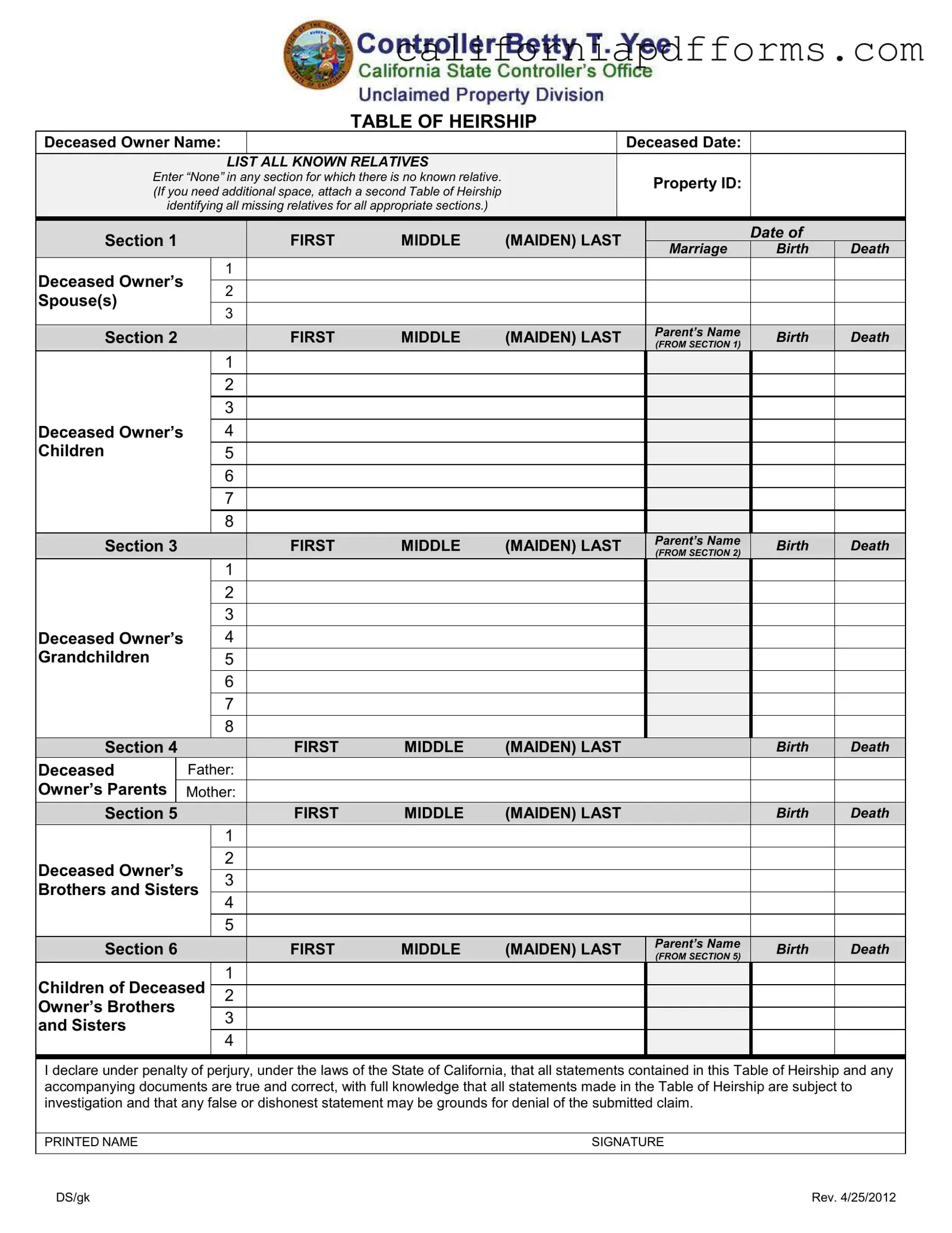Download California Heirship Form
The California Heirship form is a legal document used to establish the heirs of a deceased property owner. This form requires detailed information about the deceased and their known relatives, ensuring that claims to property are accurately represented. Completing this form is essential for those seeking to claim their rightful inheritance; fill it out by clicking the button below.
Open Your Form Online
